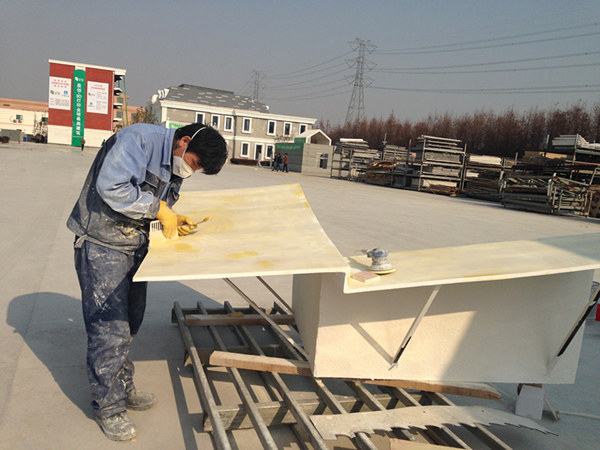A new way to build homes
By Yang Yang ( China Daily ) Updated: 2015-03-07 07:56:18
 |
|
3-D printed window frame. [Photo by Yang Yang/China Daily] |
In 2006, Yingchuang New Materials began printing slates using 3-D technology. In 2008, it developed the technology to print houses. Last March, the factory built the first 3-D-printed houses in the world, Zheng says.
The printing machine is said to be 6.6 meters high and 10 meters wide. As one of the company's core technologies, it is not open to the public.
"We made a technical breakthrough, expanding the original 1.2-meter-wide technique to 10 meters wide, so that we can print walls. We are the only company in the world that can print walls wider than 2 meters," Zheng says.
If the house is not very tall, the walls can be made hollow to save on materials. Developers can also add other materials to provide insulation for the home.
"With shorter construction time, fewer workers and less material, using 3-D printing technology to build structures such as the five-story building saves us about 50 percent on construction costs, as compared to traditional methods," he says.
To demonstrate the technology to real estate buyers, Yingchuang New Materials built a 469-square-meter villa in Suzhou's Wujing district.
The total cost of building and furnishing the villa was less than 1 million yuan ($159,469).
"We are doing a low-income housing project for Egypt," Zheng says. "We will transport the printed parts of the house to Egypt and put the parts together there. If the local government approves the project's building standards, we will first build 200 such houses in the desert. The whole project calls for building a total of 20,000 similar houses in Egypt."
Transporting the printed parts for 20,000 houses to Egypt is not practical, so Winsun Global will build a factory in the desert that can 3-D-print house parts.
"One of the best things about 3-D house printing in the desert is that you can use the sand as a building material. In the desert, water and other resources are very limited. Our technology will save labor costs, resources and time," Zheng says.
"If all goes as planned, we will first build a factory in the desert and use the 3-D printing technology to build houses. Buliding these kinds of cities in the desert could be a way to tackle desertification."
|
|
|
|
|
|
|
|

























 Raymond Zhou:
Raymond Zhou: Pauline D Loh:
Pauline D Loh: Hot Pot
Hot Pot Eco China
Eco China China Dream
China Dream China Face
China Face






